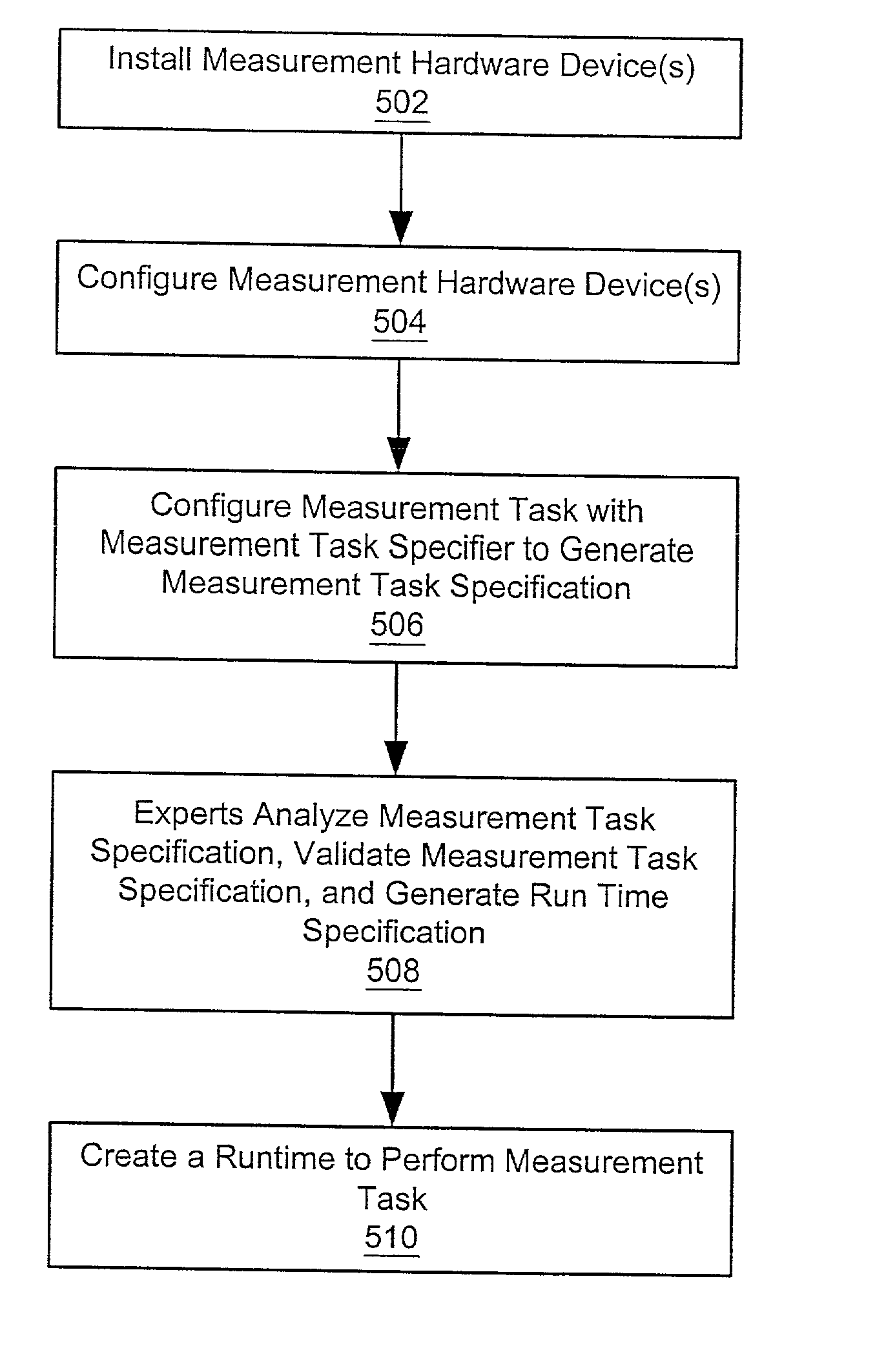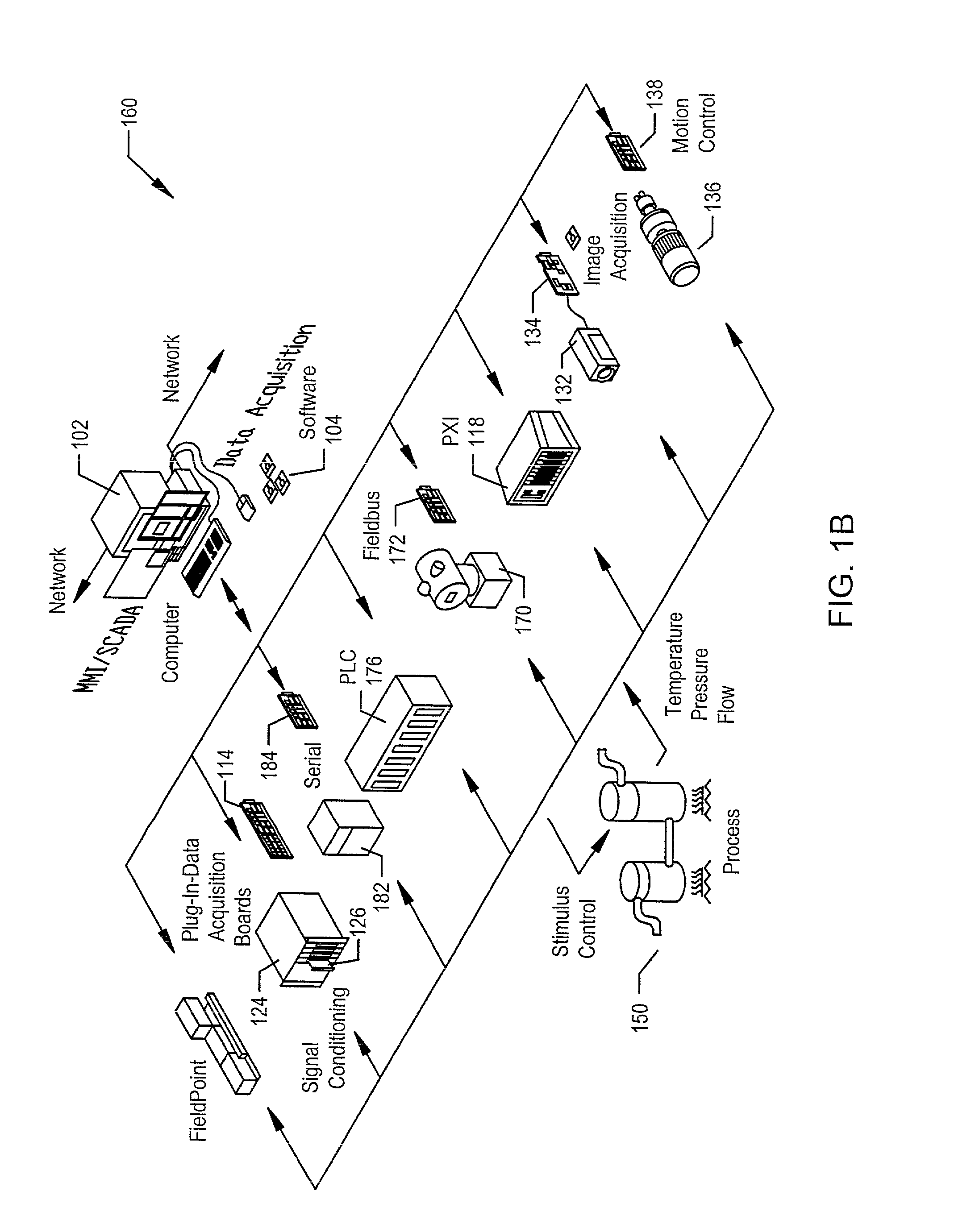One important omission of some prior art systems is that there is no
state model for the system, resulting in un-coordinated
resource management, e.g., resources may be reserved, programmed, and unreserved continuously due to the fact that current state information of the system is unavailable to system processes and components.
However, some prior art systems are designed for generality, and so for specific tasks, many
layers are superfluous and inefficient.
Each traversal of a
software boundary requires CPU cycles and stack operations, and so large numbers of these
layers can degrade performance substantially.
Some prior art measurement systems
restrict program execution to a single thread, even when accessing different devices, e.g., simultaneous buffered analog input and
single point digital output.
Limiting execution to a single thread cannot only result in substantial inefficiencies, but can degrade functionality as well.
This
polling may, at times, completely consume the CPU resources (cycles), preventing other functions or tasks from being executed.
For example, if the device is being polled in the kernel, the
user interface may freeze because no CPU cycles are being allocated to the
user interface.
Some prior art measurement systems provide little or no support for abnormal process termination or unexpected
device removal.
For example, an abnormal process termination, or
device removal or
insertion, may cause the measurement system to
crash or behave improperly.
Some prior art measurement systems often provide little or no support for distributed measurements wherein measurements are made with devices on other computers.
One problem with some prior art systems regarding
embedded applications relates to monolithic architectures.
The size and expense of such solutions may make them infeasible for many applications.
In some prior art measurement systems, the use of multiple devices in a measurement task can be problematic due to a lack of integration.
In some prior art measurement systems synchronization issues present difficulties which result in increased complexity of task implementations.
As FIG. 40A shows, the VI to synchronize the analog input (AI) and analog output (AO) subsections of a device is very complicated.
As FIG. 40B shows, the complexity of the configured system is significantly less than the prior art system presented in FIG. 40A above, due to the fact that the software components may use protocols to coordinate timing and triggering, automatically routing signals within a device.
Much of the timing and triggering signals must be explicitly specified, which greatly increases the complexity of the VI.
These configuration details add expense to the coding, debugging, and testing cycles, and may intimidate some customers.
It is sometimes the case in prior art systems that these
layers are mutually exclusive, meaning that the APIs of each layer are not interoperable.
This restriction may limit the customer's ability to use certain measurement modules in that modules or functionality implemented in different software layers may not be useable together.
Additionally, the use of multiple APIs in a measurement system may result in features which are not accessible or available in some areas of the system.
The two embodiments of the expert system both address many of the limitations of the prior art, including performance related issues such as the lack of a
state model, inefficient code paths, inefficiency and unresponsiveness of reads, single-threaded driver, large
memory footprint, lack of robustness in exceptional conditions, limited support for distributed measurements, and limited support for embedded devices, among others.
However, the branching and prioritization sub-architectures may introduce significant complexities to the design and implementation of the system which may possibly outweigh the benefits gained by these more efficient code paths.
The static system generally results in a larger
memory footprint than the dynamic system.
The static system does not support synchronization to the same degree primarily for two reasons.
First, there is a class of use cases that involve heterogeneous timing and triggering for which it is neither appropriate nor reasonable for a non-application-specific measurement architecture to satisfy.
However, this model is different from that to which many users are accustomed.
In the dynamic system there is a potential for performance problems as the number of nodes in the tree grows.
While this may be mitigated to some extent by sequencing expert invocation and reducing the number of branches created by the streaming experts, performance problems may still result.
For another example, the number of nodes in the
decision tree may explode when trying to use branching to solve exponentially
complex problems such as choosing timing protocols or resolving matrix switching.
In the dynamic system, with many dynamic collaborations between experts, it may be difficult for one expert to reinterpret an
error message from another expert to an
error message within its context.
Additionally, if a
decision tree has many branches, all of which fail to find a solution, it may be difficult to prioritize these failed branches to determine which one is the closest to a solution and, therefore, the best failure from which to return an
error message.
Prioritizing multiple potential solutions based on default or customer-specified
metrics may be difficult, yet very important if the best solutions are to be chosen by the expert system.
Prioritization generally adds complexity to the architecture.
The lack of the generic nature of experts in the static system reduces the flexibility of the system and increases the effort required to introduce new expert concepts.
This increases the complexity of some aspects of the architecture in order to support the required level of performance for reconfiguration.
However, other aspects may not be readily implementable, such as integrating routing, streaming, and control experts with device-centric experts, branching, and, therefore, prioritization.
 Login to View More
Login to View More  Login to View More
Login to View More 


